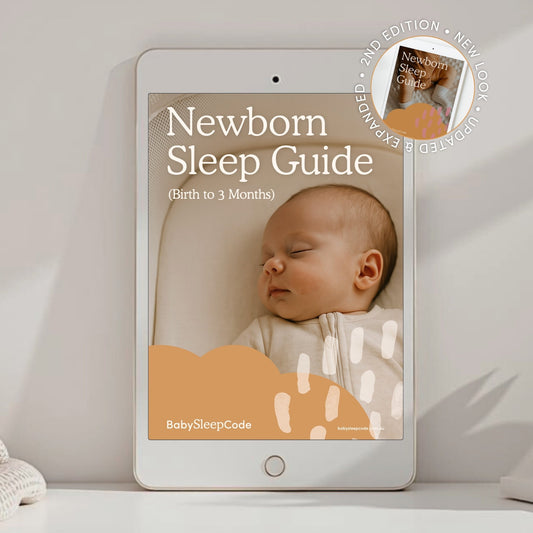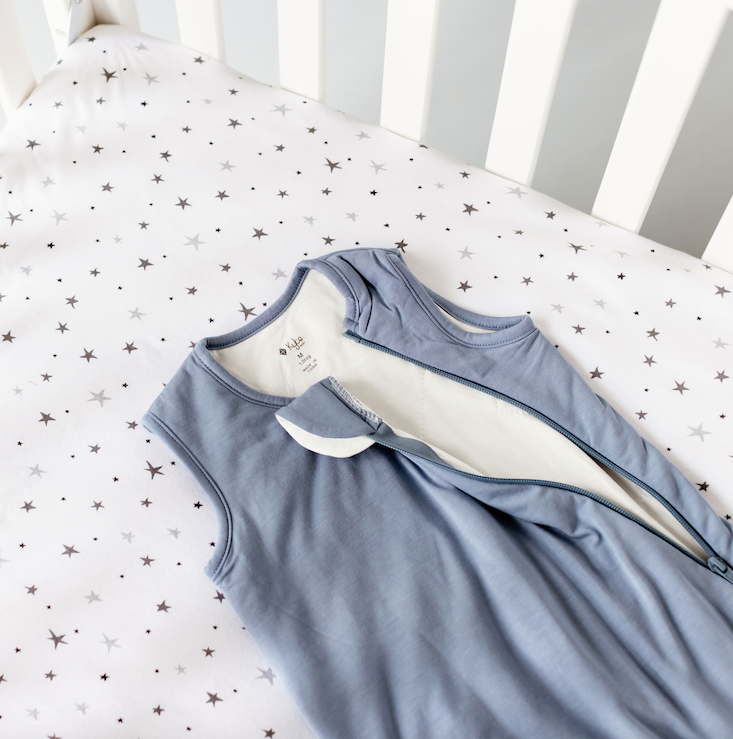Both my kids, now 4 years and 16 months, sleep with a little comforter. Watching them snuggle up with their little companion before falling asleep is super cute! And when they first wake they’ll often play with them awhile before calling out, so buys me a little extra time in the mornings.
What is a baby comforter?
A comforter, also known as a lovey or cuddle blankie, is a small soft toy or blanket designed to provide comfort and security to babies and toddlers. It can help to ease separation anxiety at sleep times, and can bring comfort during transitions - ie. at daycare drop offs.
Do I have to introduce a comforter?
No, introducing a comforter isn't a must-do, but I've noticed that around the 18-month to 2-year mark, kids tend to find their own sleep buddy if you haven't already introduced one. Sometimes, these are quirky things that might not be ideal for sleep. A friend's little one would only sleep with her gigantic holiday elf – which wasn’t at all washable and they only had one, so proved for a difficult bedtime if ever misplaced.
When can you introduce a comforter?
You can introduce a comforter as a comfort item at any age, however it should not be introduced as a sleep item or left in a baby's cot until over 12 months of age. This is inline with the RedNose safe sleep guidelines, and the American Academy of Pediatrics.
Tips on introducing a baby comforter for sleep times:
There isn't really a right or wrong way! But here are some simple steps as a guide to help your little one get acquainted with their new comforter and start to associate it with both comfort and sleep.
Step 1: Choosing The Perfect Comforter
Pick out a soft, safe, and age-appropriate comforter or lovey. Go for something small and lightweight, avoiding any small parts that could potentially come loose and pose a choking hazard. I recommend a small handkerchief-sized comforter made from breathable, and ideally natural fibers. Something synthetic or with loose fibres aren’t going to be safe for babies to suck or chew on.
Step 2: Make it Familiar
In the beginning, the comforter is actually supposed to represent you. It's about creating an association between the comforter and Mum or Dad. To achieve this, wear the comforter down your top for the day or let it absorb your scent while you sleep (natural fibers work best for this!).
Step 3: Part of Feeding Time
Introduce your baby to their new friend during play or feeding time. Position it between you and them during a feed, and if your little one tends to play with your hair or necklace during feeding, gently guide their hand towards the comforter instead.
Step 4: Bedtime Routine
Now it's time to weave the comforter into the bedtime routine. During your usual pre-sleep routine, add a playful element by showing your baby that the comforter is a friendly pal – give it a cuddle yourself and create a little pretend exchange of cuddles and kisses between you, the comforter, and your baby. Make it a fun, playful interaction.
Step 5: Sleep Association
When ready, start to use their comforter for all sleep times. Handing it to them to cuddle before placing them down in their cot for sleep. You can start your own little ritual. My youngest is handed her comforter and then she throws it in her cot with a little giggle, and will then dive in after it. When they’re upset during the day you can also encourage them to give their comforter a cuddle (while you comfort them also) so they start to relate it with comfort too.
And that's it!
Don't stress if your baby doesn't show much interest initially, consistency is key, and soon enough they'll associate it with sleep and comfort. As time goes on, you can even take the comforter with you for naps on the go, travel days and holidays, or bring it to childcare or unfamiliar places for that extra comfort.






